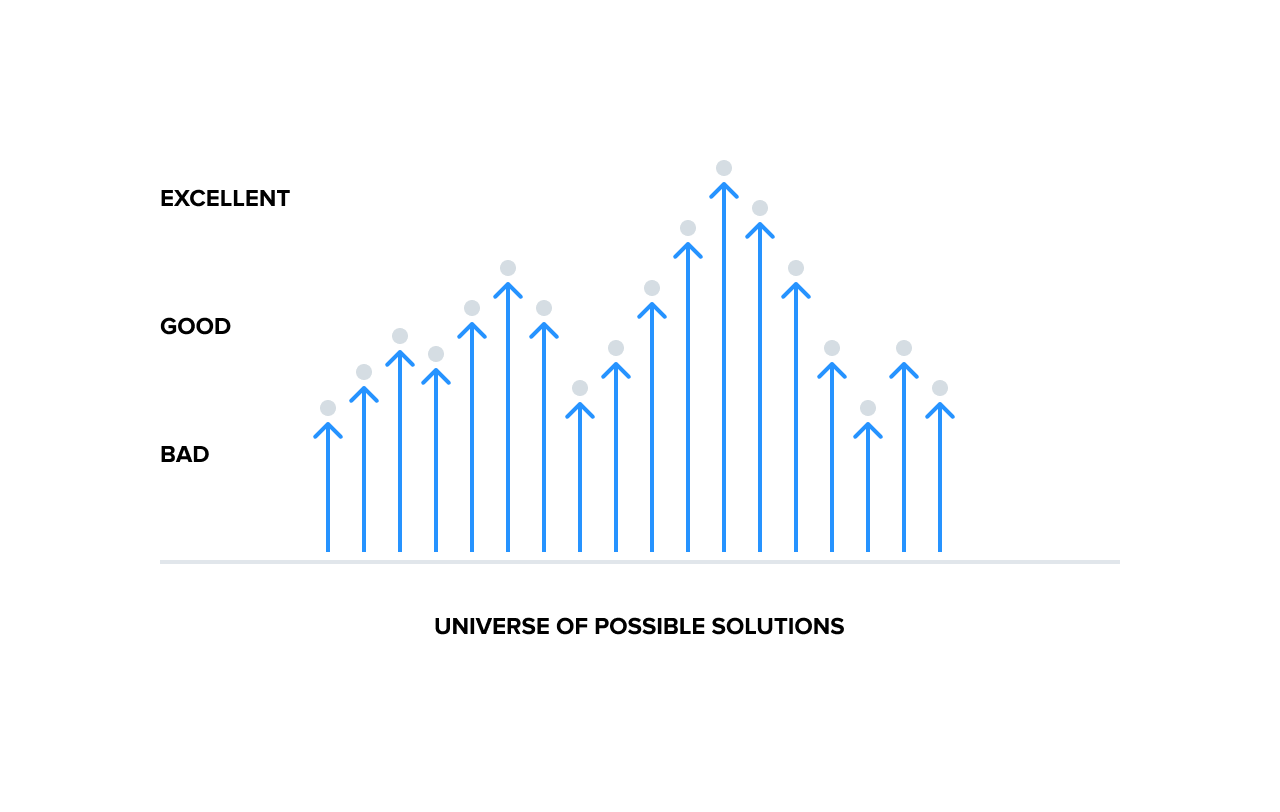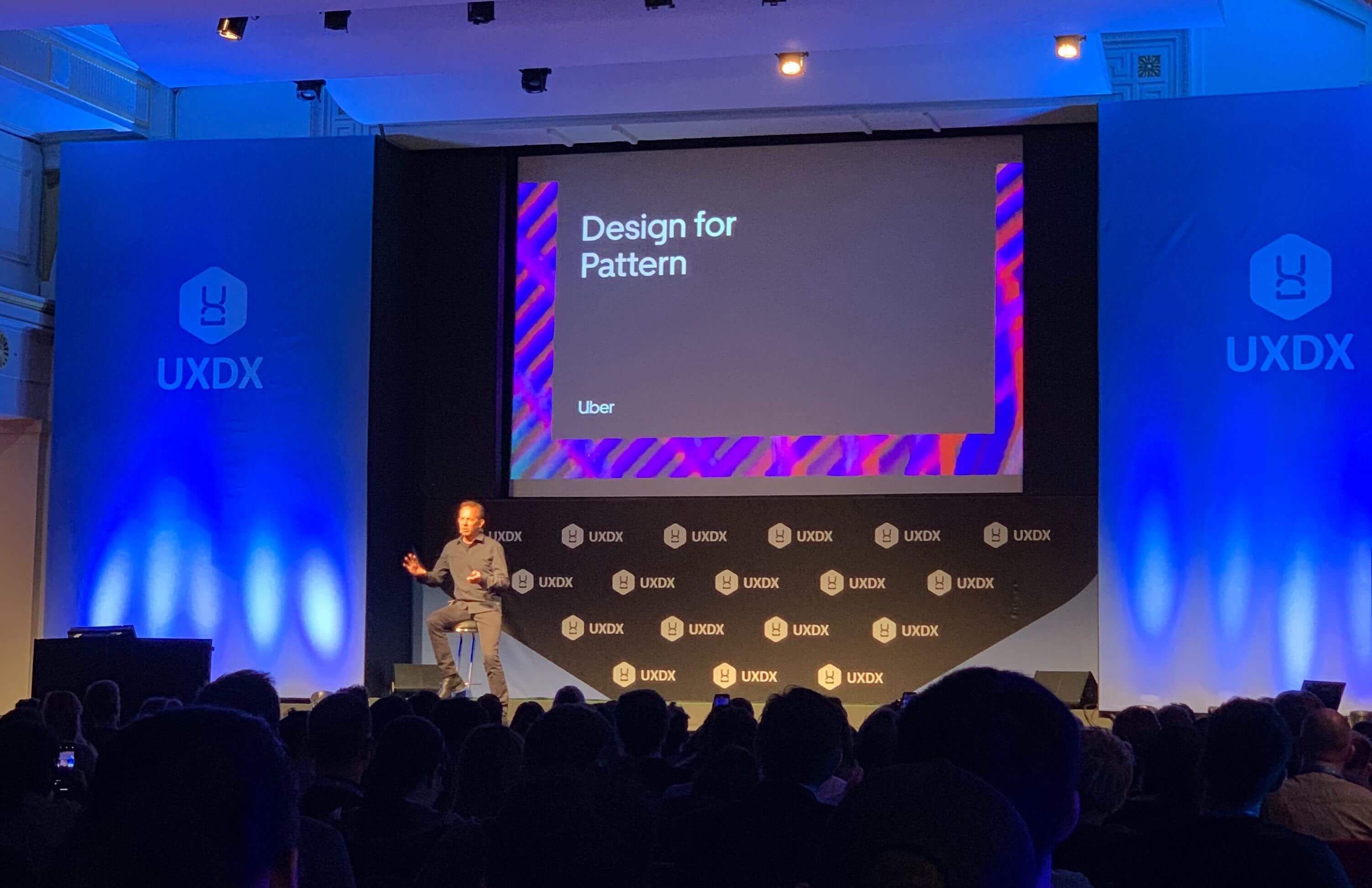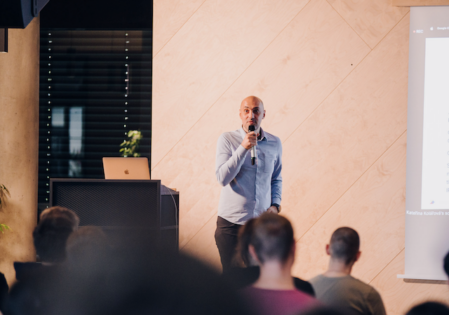UXDX recap: Product design experts from Uber, Mastercard, and more share their insights

Last week, my fellow designer Zdenek and I hopped on a plane to Dublin to attend the 4th annual UXDX conference. During our time in Dublin, we spent 2 days at the Royal Dublin Society listening to design thought leaders share their perspectives on product development and how they bridge the gap between product, design and engineering.
We identified two big themes from the talks:
- The need to think about design beyond a simple problem-solving approach. The context and ecosystems in which products exist must be considered as well
- How to optimize design culture by working within Agile and finding solutions to misalignments within the organization
Below we summarize four talks from the conference that we found both inspiring and enjoyable.

The road to excellence
Speaker: Kevin Clark, Design Lead at Shopify
To find excellent design ideas, find the correct problem, focus on quantity over quality, and explore varied interests.
Kevin is obsessed with excellence and fascinated by products that go above and beyond. I have to admit that this resonates with us a lot (maybe because of Product Excellence? ?). Here are three unconventional ideas on how to achieve excellence:
- Solving problems is easy as soon as you find the correct problem. The designer’s first and most essential task is choosing the correct problem to solve. Because if you get that wrong, every choice you make after that is irrelevant.
- Quantity over quality. Illustrating his point with a story about Shopify experimenting with 30 design variants for an order-tracking feature, Kevin explained how exploring many ideas will help you find the one that is excellent. He calls it design by brute-force.
- Explore varied interests, don’t specialize! Everyone has different backgrounds, hobbies, and skillsets. We should go and explore for ourselves and apply those diverse skills in design. For example, Kevin developed a weather app for Apple Watch as a side project and part of the code was actually reused for Shopify.

Definition of Done
Speaker: Paul Adams, SVP Product, Intercom
A high functioning company can be explained by a simple mechanism that consists of three pillars — inputs, outputs, and outcomes. Successful makers obsess with the whole system rather than just one part of it.
Definition of Done is a well known and contentious term in the world of software development. It’s when all conditions that a software product must satisfy are met and ready to be accepted by a user. It was also the cryptic name of Paul Adams’ talk, which he opened by stating that nothing is ever done in the world of software.
Paul went on to share his view on how organizations can move towards delivering outcomes (rather than working in functional silos) through a simple mechanism of inputs (the understanding that enables new projects), outputs (shipping products and features — the heartbeat of a company), and outcomes (the impact that ties to higher level business goals).
This mechanism captures how high-functioning Product and Engineering teams work. Teams do projects, which change the product, which then change the behavior of customers. In order to work on these projects, organizations need to first deeply understand customer problems, which are inputs that feed roadmaps. Once a team changes a product (ships a feature), that’s clearly an output. And an outcome is the impact the change has and how it is defined as a business result.
Paul stresses that makers should obsess with the whole system and not just inputs, outputs, or outcomes.
His spin on this topic was really refreshing. It reminded us of what’s important — that we should obsess with the whole system rather than individual pieces of it. Shipping features is a company’s heartbeat, and while you need to consistently deliver output, that’s just one part of the story.
Design for patterns
Speaker: Michael Gough, VP of Design, Uber
Uber has built products that have a direct impact on millions of lives every day. By studying that impact, it allows Uber’s design team to spots patterns in the world and intentionally design for them.

Seeing a VP of Product Design from a company like Uber is an exciting event in itself. Michael is a great storyteller, and sat on a bar stool in front of the audience and talked about how Uber has created an ecosystem with its product — a virtual world of logistics connecting people to people, and people to things. Embedded in the virtual world are real customer experiences.
He then talked about how Uber spots patterns in the world and intentionally designs for them, but at the same time stays aware of the implications and impact — whether it’s social, economic or environmental. Micheal graciously shared some examples.
One involved helping those with hearing impairments gain new employment opportunities. Seventy percent of people with impaired hearing in the US couldn’t get a job, but began driving Uber when the app caught on. It did not end there, Uber then expanded its rider app so riders would know if they wouldn’t be able to communicate verbally with drivers. Uber also added sign language basics in the app so riders could thank drivers after a ride.
Despite these achievements, Michael admits that Uber isn’t perfect. Still, his team is focused on continually noticing patterns that they can improve on with design.
Create a tangible, achievable, and actionable product vision
Speaker: Cindy Chastain, SVP Customer Experience & Design, MasterCard
A strong product vision articulates tangible value for both the customer and business, is achievable by the business, and is actionable by teams.
When Cindy joined Mastercard 5 years ago, the company had just started developing its digital product portfolio. A piece of advice she received was to find quick wins fast. She found her opportunity with Priceless.
Cindy worked with a small team and agency, developer and designers. They leveraged research and design thinking…everything felt great! Until they had a session with CMO. Right from the start they received feedback that the product experience they created was terrible. Why? Because it didn’t live up to the strategy he had in his head.
To prevent this, Cindy articulated the importance of a strong product vision, and involving stakeholders from the beginning of the product management process.
A strong product vision articulates tangible value for both the customer and business, is achievable by the business, and actionable by teams.
Our main takeaway?
If you want to achieve alignment around your product vision, you need to bring diverse stakeholders to the table and let them speak. A strong product vision that is tangible, achievable, and actionable will de-risk your product, and accelerate speed to market!
Customer needs as environments and constraints
Speaker: Alan Klement
Simply understanding customer needs is not enough. Instead, makers should understand the environments and contexts that shape these needs.
Alan started his talk with a series of metaphorical questions:
- If you plant an acorn in the ground, will the outcome be a full grown oak?
- What if I plant the acorn in the Sahara, or at the bottom of the ocean?
- Can I take credit for growing an oak? If it doesn’t grow, is it my fault?
Alan used these examples to describe his perception on user needs through the lens of their environments and constraints. He stressed that simply understanding customer needs is not enough. Instead, makers should understand the environments (in the oak example, there are multiple factors, such as humidity, sunlight, fertility of ground, etc.) that shape these needs.
To learn more about these environments, Alan recommends asking these specific questions:
- What can you do now with the product that you couldn’t do before?
- If you were to use this product, what would you give up?
These findings helps uncover where teams can focus their resources as they build products.
–
UXDX was a wonderful learning experience for the productboard design team. There were many actionable takeaways from the event’s talks, and unbeatable networking opportunities. We hope to see you next year!
. . .
productboard is a product management system that enables teams to get the right products to market faster. Built on top of the Product Excellence framework, productboard serves as the dedicated system of record for product managers and aligns everyone on the right features to build next. Access a free trial of productboard today






